
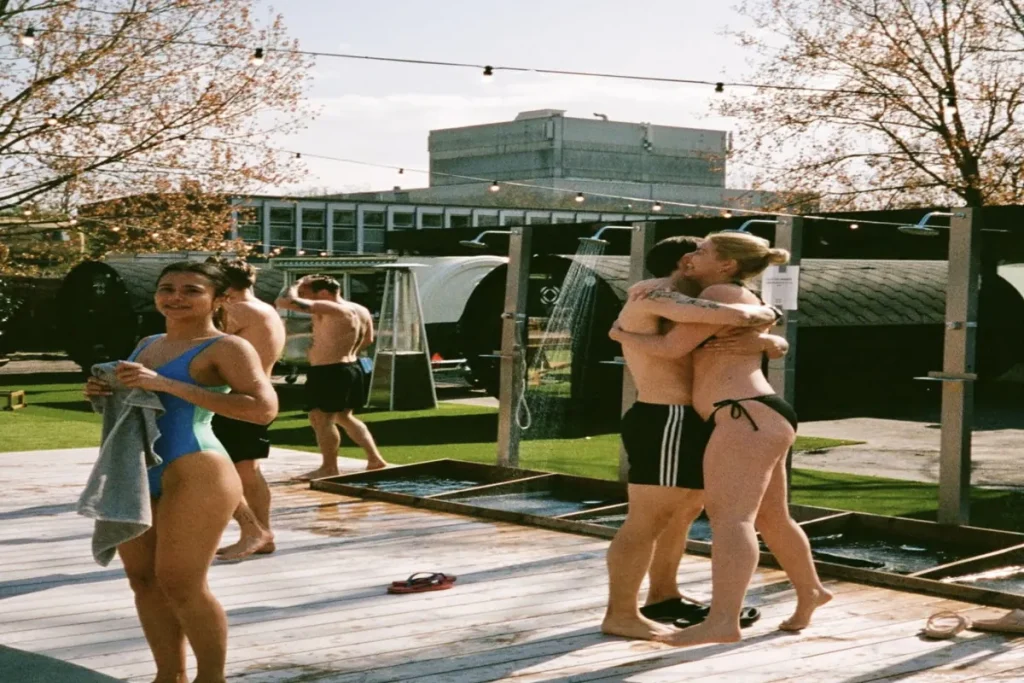
In this article we explore how purposeful use of heat therapy (saunas, hot immersion, infrared), cold exposure (ice baths, cold showers, contrast therapy) and strong community connection can combine to improve physical recovery, mental resilience and overall well-being. You’ll gain science-based insight, practical steps for beginners, safety considerations, and an understanding of why shared wellness practices amplify results.
In recent years, wellness culture has broadened from simply “eat well, move more” to actively embracing physiological stressors—heat, cold—and social experiences as tools for optimisation. Many health-conscious adults are turning to methods like sauna bathing, ice baths and communal wellness sessions not just for recover-and-relax, but for resilience, energy, mental clarity and human connection. The convergence of three factors—thermal stress (both hot and cold) and the communal context—represents a sophisticated, forward-looking approach to well-being. Let’s dig into the science, the practice, and the community dimension.
Science-Backed Benefits of Heat Therapy
Heat therapy—whether via sauna, infrared, hot-water immersion, or hot packs—has a solid basis of evidence for improving circulation, muscle recovery, pain relief and cardiovascular health.
What happens physiologically
- Heat causes vasodilation (widening of blood vessels), which increases blood flow, delivers more oxygen and nutrients, accelerates removal of metabolic waste. Healthline+2arthritis.org+2
- It enhances metabolic activity in tissues, increases heat-shock proteins, improves mitochondrial and proteostasis function. PMC+2medcomgroup.com+2
- It helps loosen stiff muscles and joints. For example, people with chronic low back pain experienced pain relief and improved flexibility with continuous low-level heat wraps. PMC
- Cardiovascular and longevity outcomes: Regular sauna bathing has been linked with reduced incidence of vascular disease and stroke. mayoclinicproceedings.org+1
Key benefits
- Improved recovery & reduced muscle soreness — A review found local heat therapy accelerated work-capacity recovery after eccentric exercise. PMC
- Pain relief & improved mobility — Heat treatments are widely recommended for musculoskeletal pain and stiffness. ScienceDirect+1
- Cardiovascular and metabolic benefits — Sauna use correlated with improved vascular function and lowered insulin resistance. PMC+1
- Mental/brain health support — Some studies link heat therapy with stress reduction and potential neuroprotective effects. Biomedical Odyssey
Practical takeaway
For a wellness-programme aiming at energy, recovery and resilience, heat therapy is a high-leverage tool. Using a sauna, hot bath or infrared session 2-3 times per week can provide systemic benefits beyond mere relaxation.
Science-Backed Benefits of Cold Exposure
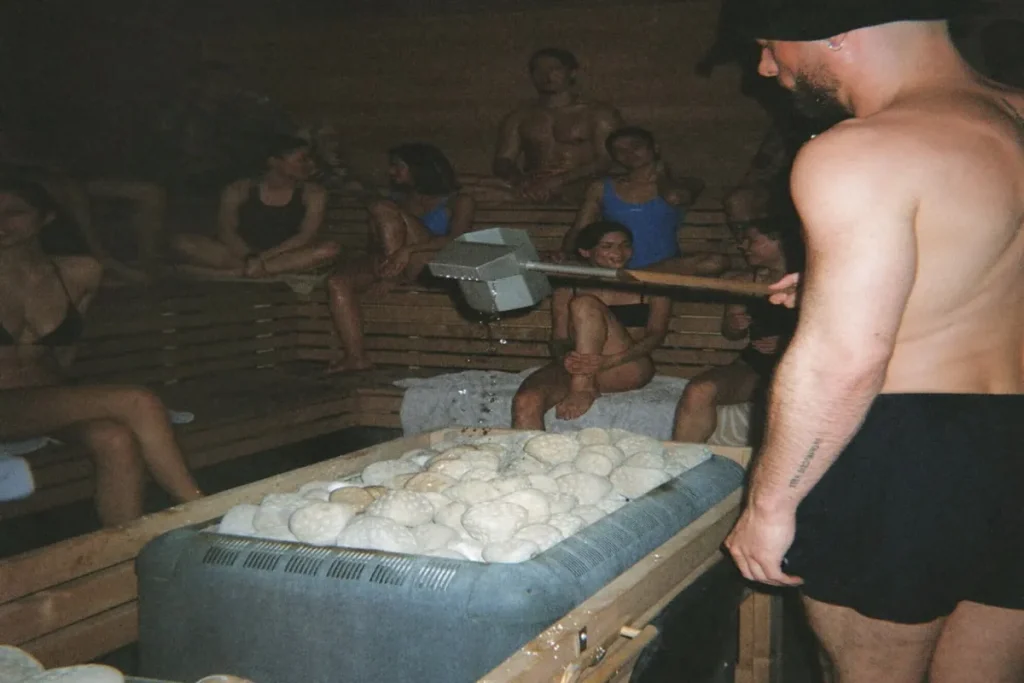

Cold exposure—through ice baths, cold showers or immersion in cold water—is another pillar of modern wellness. It applies thermal stress that triggers adaptation responses.
Physiological mechanisms
- Cold causes vasoconstriction (narrowing blood vessels), followed by vasodilation upon rewarming, which can enhance circulation fluctuations. novanthealth.org+2uclahealth.org+2
- It stimulates the sympathetic nervous system, increases noradrenaline, possibly dopamine, which can sharpen alertness and improve mood. Research shows cold-water immersion improves positive affect and reduces negative affect. PMC+2uclahealth.org+2
- Some systematic reviews suggest cold-water immersion may reduce sickness absence, improve sleep quality, affect inflammation over time. PubMed+1
Key benefits
- Reduced inflammation & quicker recovery — Studies indicate cold immersion may reduce inflammation after exercise and speed recovery. Mayo Clinic Health System+1
- Mood enhancement & mental clarity — Short-term immersion shows increased positive mood, alertness, and less distress. PMC+1
- Resilience training — Cold exposure is a practical way of creating a controlled stressor that over time can improve adaptive capacity.
- Metabolic and circulatory benefits — Cold exposure may activate brown adipose tissue, reduce chronic inflammation, improve metabolism. ScienceDirect
Caveats
The body of evidence is growing but still has limitations: sample sizes are small, methods vary, and benefits may be context- and individual-dependent. PMC+1
Practical takeaway
Cold exposure can be integrated into a wellness routine—cold showers, ice baths or outdoor cold swims—but should be introduced carefully. Even a 1–2-minute cold shower or brief ice immersion can yield a positive mental/emotional response.
Contrast Therapy: Benefits of Combining Heat & Cold
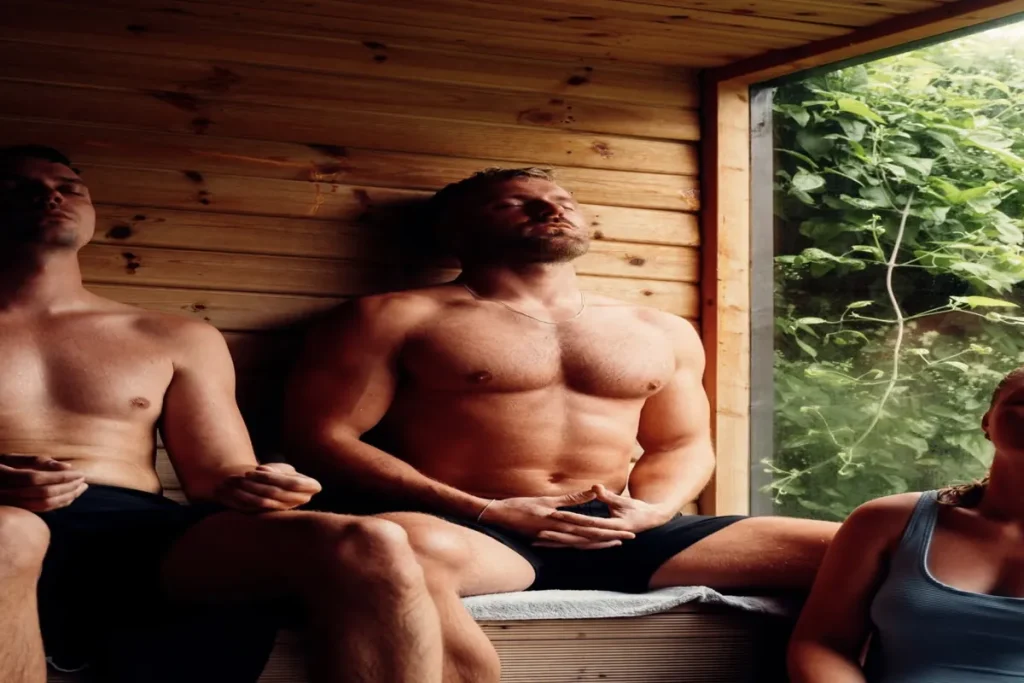

Combining hot and cold exposures—commonly known as contrast therapy—leverages benefits of both thermal extremes and creates additional physiological responses.
Mechanisms & benefits
- Alternating heat and cold causes rapid transitions in vasodilation/vasoconstriction, which may stimulate the circulatory system, reduce muscle soreness and enhance recovery. PMC+1
- Some reviews indicate that heat followed by cold, or vice versa, may accelerate recovery from muscle damage. MDPI
- Practical anecdotal evidence suggests the contrast method heightens alertness, increases the sense of invigoration, and can amplify overall wellness effect by combining soothing (heat) with invigorating (cold).
Application in wellness
For example:
- 3–5 minutes of sauna or hot bath → immediate transition to 1–2 minutes cold plunge or cold shower → repeat 2-3 cycles.
- Post-training recovery protocols for athletes.
- Contrast showers at home: hot for 3 minutes, cold for 1 minute, repeat 2–3 times, end on cold. (As recommended by some sports medicine sources.) uclahealth.org
Practical takeaway
Contrast therapy is a potent tool for both physical recovery and generating a “reset” state for body and mind. For wellness-minded adults, it offers efficiency: combine two tactics in one session.
Mental Health Benefits and Emotional Resilience
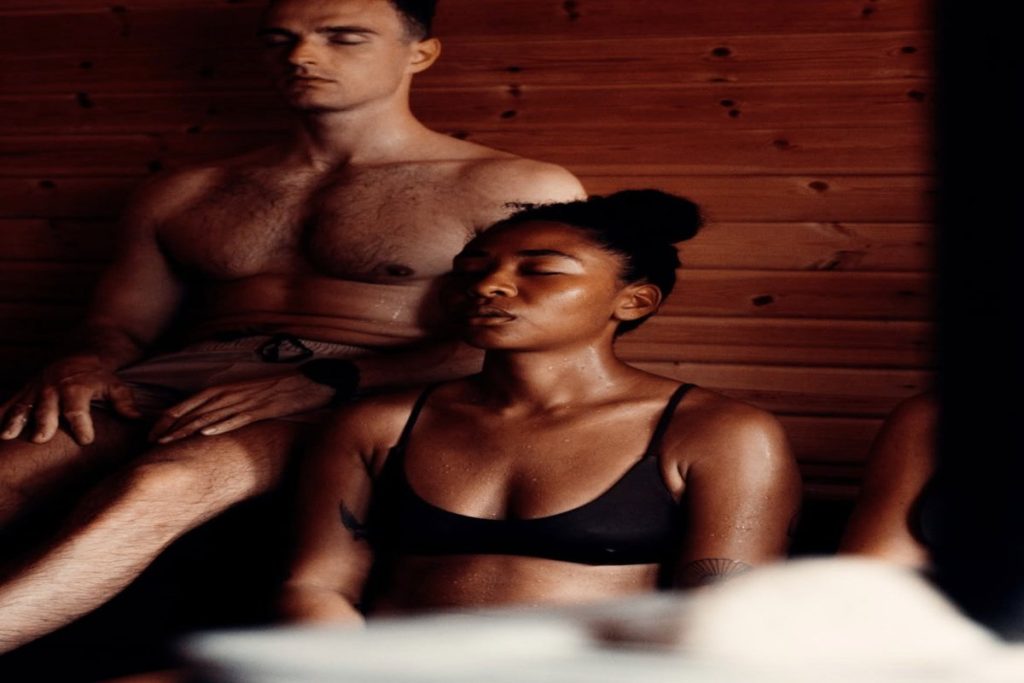

Wellness isn’t only about muscles and circulation—it’s intimately tied to mental health, emotional regulation and resilience.
Heat & mental/emotional benefit
- Heat therapy supports relaxation, reduces muscle tension and evokes the parasympathetic “rest and digest” response—important for recovery from chronic stress.
- Research links sauna use to lower stress-related health risks and suggests neuroprotective potential. Biomedical Odyssey
Cold & mental/emotional benefit
- Cold exposure triggers a controlled stress response, followed by recovery, which may cultivate resilience and better stress management.
- One study shows cold-water immersion increased feelings of alertness, pride, inspiration while reducing distress. PMC
- Meta-analyses show possible benefits for sleep and quality of life after cold-water immersion. PubMed+1
Why community matters for mental health
- Being part of a group or community amplifies motivation, accountability, shared purpose and social connection—which are proven protective factors in mental health.
- The combination of communal thermal sessions (sauna clubs, cold plunge groups) plus shared challenge fosters both social bonds and individual transformation.
Practical takeaway
When you engage in heat/cold practices within a community setting (club, group, class, online cohort) you multiply the benefits: physiological + psychological + social. This is especially relevant for high-performing professionals who can benefit from structured, shared wellness experiences.
The Social and Community Aspect—Why Shared Experiences Increase Well-Being
Beyond the individual thermal practices, the communal dimension is a critical lever for deeper impact.
Why community enhances wellness
- Accountability & consistency: When you participate with others, you’re more likely to show up regularly.
- Shared challenge, shared identity: Engaging together in “extreme” wellness rituals (e.g., cold plunges, sauna sessions) builds group identity, resilience, and cultural belonging.
- Emotional support & belonging: Wellness is not just physical—humans are social beings. Feeling connected reduces loneliness, boosts resilience, and enhances mental well-being.
- Collective learning: Within a community, members share tips, experiences, failures and successes—accelerating everyone’s progress.
Example in practice
Consider a weekly “Heat & Cold Club” where members gather for 20 minutes of sauna, followed by ice bath or cold shower, then a group debrief or tea. The physical rituals create bonding, the shared vulnerability creates trust, the outcome is measurable (better recovery, mood uplift, a sense of belonging).
Practical takeaway
If you’re leading a wellness initiative (as you are, Patricia), building the community component into your programme is essential. Design modalities not just for heat/cold exposure but for shared experience, peer support, group rituals and storytelling.
How to Get Started — Practical Steps for Beginners
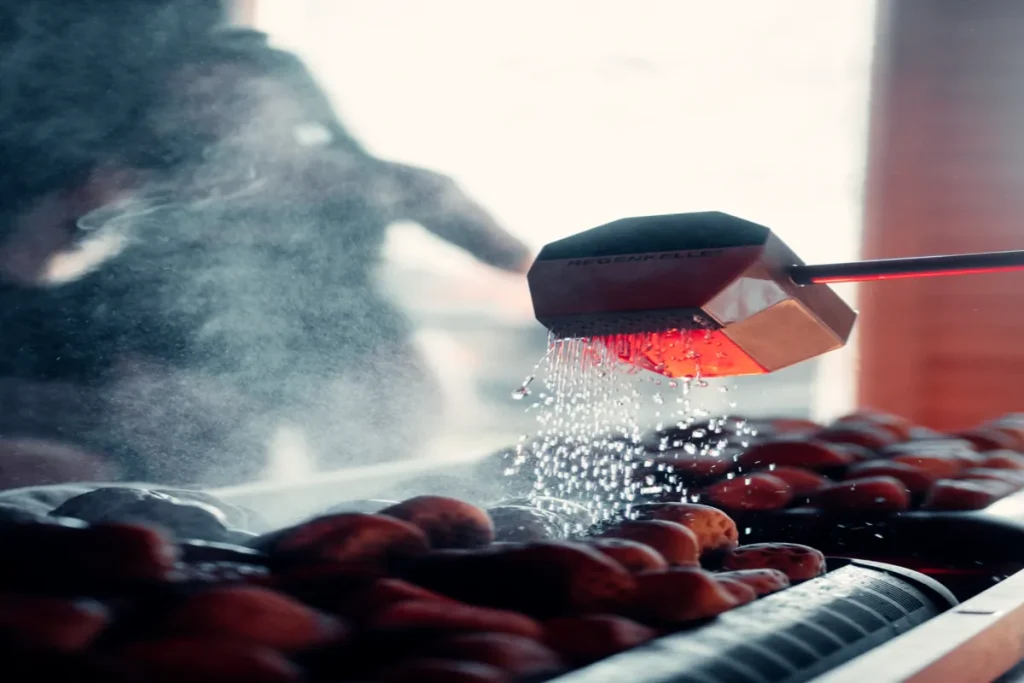

Here is a step-by-step roadmap to introduce heat, cold and community into your wellness routine—safely and effectively.
- Define your purpose. Ask: Do you want more energy? Better recovery? Mental resilience? Social connection?
- Start with accessible formats:
- Heat: Use a sauna (infrared or traditional) or hot bath-immersion for 10-15 minutes.
- Cold: Begin with cold showers (30–60 seconds at water as cold as comfortable) or a partial ice immersion.
- Community: Invite a friend, partner, or small group to join you; share your goals and schedule.
- Build consistency. Aim for 2-3 sessions per week of heat or cold exposure initially. Over time consider contrast sessions (hot → cold → hot) once you’re comfortable.
- Progressions:
- Gradually increase duration: e.g., from 30 s cold to 1–2 min over weeks.
- Introduce contrast therapy once the body is adapted: hot ~3 mins, cold ~1 min, repeat 2-3 cycles.
- Create a community ritual: group entrance, shared recovery beverage, reflection circle.
- Track outcomes: Monitor energy levels, sleep quality, mood, recovery after workouts, sense of belonging. Use these metrics to refine the protocol.
- Integrate into broader wellness plan: Combine thermal practices with movement (e.g., mobility work, strength training), nutrition (adequate protein, hydration) and mental recovery (meditation/sleep).
- Make it part of culture: Build rituals, stories, social rewards (post‐session reflection, “what did you feel today” roundtable) to fortify habit.
Safety Considerations and Contraindications


As with any potent wellness intervention, heat and cold therapies carry risks if misused. It’s essential to be informed and cautious.
Heat safety
- Individuals with uncontrolled hypertension, cardiovascular disease, or acute illness should consult a physician before intense heat exposure (e.g., sauna).
- Ensure proper hydration before and after. Heat causes fluid loss via sweat.
- Avoid prolonged extreme heat when feeling unwell or fatigued.
Cold safety
- Cold exposure puts stress on cardiovascular and respiratory systems; people with heart disease, uncontrolled hypertension, Raynaud’s syndrome, or circulation issues must consult a doctor. uclahealth.org+1
- Risks include cold shock, uncontrolled hyperventilation, hypothermia in extreme settings. AP News
- Always start gradually. Limit initial cold session to 30–60 seconds. Monitor how you feel. Get out if you experience severe discomfort, numbness, dizziness.
Contrast therapy caution
- The transition between heat and cold should be gradual, not sudden extremes if unaccustomed.
- Ensure a safe environment: proper flooring, non-slip surfaces, supervised ice baths.
- Listen to your body—if you feel dizzy or faint, stop and recover.
Community/Group safety
- If practicing in a group, ensure qualified supervision or protocol guidelines, especially for beginners.
- Ensure the environment fosters safety protocols, proper equipment, and emergency access.
Testimonials & Case-Style Examples
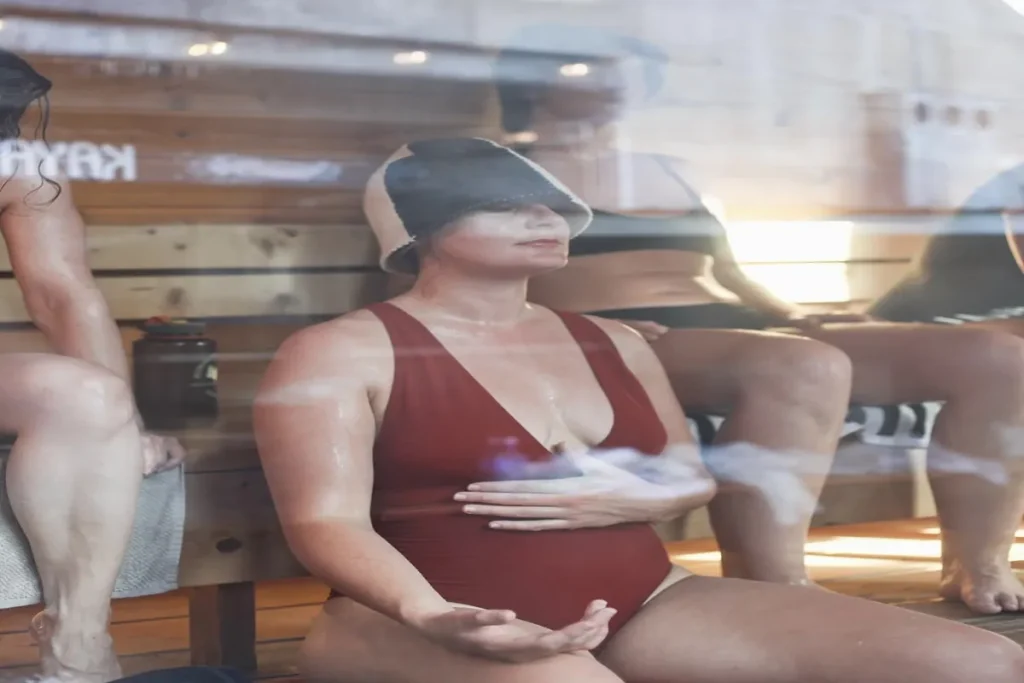

Case 1: “Emma, 42, office-professional”
Emma works long hours at a desk. She joined a weekly sauna-ice plunge group at her local wellness club. Within 8 weeks she reported: better sleep (waking once instead of twice), fewer muscle aches after workouts, improved mood on Mondays, and a sense of connection with peers. She attributes the changes to “getting into the heat, then braving the cold—and doing it together”.
Case 2: “Michael, 35, athlete & start-up founder”
Michael included a contrast therapy session (15 min infrared sauna, 2 min ice bath) twice a week. He noticed faster recovery between training sessions, sharper focus for afternoon strategy meetings, and lower perceived stress. The group of other founders doing the session together became a “forum to connect and reset”.
Case 3: “Laura, 50, executive & wellness-leader”
Laura introduced a monthly wellness ritual at her company: 30 min hot tub + 1 min cold shower + group sharing circle. Her team reported better collaboration, higher morale and fewer sick days the following month. She integrated community, heat and cold exposure into a culture-building exercise.
These examples illustrate how integrating heat, cold and community can deliver tangible benefits—physical, mental, social—and how they reinforce each other.
Final Motivational Call-to-Action
You now have a robust, science-backed blueprint: harness the power of heat therapy, cold exposure, and community connection to elevate your health and well-being. Don’t wait for “someday”—start intentionally, build consistency, bring others in.
Commit to the next 90 days: schedule your sessions, invite your team or peer group, track your progress—and watch how your physical energy, mental clarity and relational bonds deepen. The transformation begins when you step into the heat, embrace the cold—and bring others along.
Key Takeaways
As a leader you have the opportunity to model and embed these high-leverage wellness practices into your organisation or network.
Heat therapy (sauna, hot immersion) improves circulation, recovery, pain relief and may support cardiovascular and metabolic health.
Cold exposure (ice baths, cold showers) enhances recovery, mood, metabolic function, and resilience—but should be introduced with caution.
Contrast therapy (alternating heat & cold) offers a compounded effect, particularly useful for recovery and rejuvenation.
Mental health and emotional resilience are significantly influenced by these physical practices when paired with consistent application.
Community and shared experience amplify benefits—accountability, social support, shared identity matter.
Beginners should follow a safe, gradual protocol and monitor their responses; special health conditions require medical clearance.
Track outcomes, build rituals, embed the practices in your culture—whether personal, team or community.






